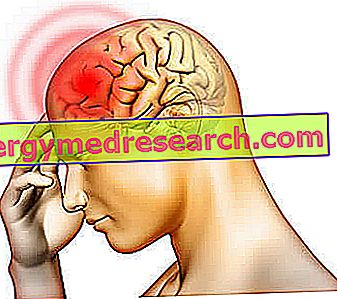Related articles: Carbon monoxide intoxication
Definition
Carbon monoxide poisoning is one of the most frequent causes of death from inhalation poisoning. It typically occurs due to the malfunction of domestic heating systems (fires, boilers, wood or coal fireplaces and kerosene boilers) or due to inadequate ventilation of cars.
Carbon monoxide (CO) is a colorless and odorless gas that derives from the incomplete combustion of hydrocarbons. The mechanisms on which its toxicity is based involve the displacement of oxygen from hemoglobin (CO has a greater affinity for Hb compared to O 2 ) and the reduction of O 2 release from Hb to tissues. Then the direct toxic effects in the brain are not excluded.
Most common symptoms and signs *
- Tinnitus
- Tinnitus
- Arrhythmia
- asphyxiation
- Asthenia
- Ataxia
- athetosis
- palpitations
- Coma
- Conati
- Convulsions
- Korea
- Abdominal cramps
- Seizures
- Dementia
- Temporal and spatial disorientation
- Dyspnoea
- Mood disorders
- Chest pain
- Erythema
- Fecal incontinence
- Hearing loss
- hypokinesia
- Hypoxia
- Hypotension
- Lethargy
- Headache
- Nausea
- Nervousness
- Nystagmus
- Memory loss
- Loss of coordination of movements
- Loss of balance
- Loss of memories
- presyncope
- Reduced vision
- Drowsiness
- Confusional state
- Fainting
- Tachycardia
- tachypnoea
- Tic
- Tremors
- Dizziness
- Blurred vision
- He retched
Further indications
Carbon monoxide intoxication causes acute symptoms, many of which are non-specific. The symptoms tend to correlate with the blood dosage of carboxyhemoglobin (COHb) in the patient.
With mild intoxication, headache, nausea and vomiting can begin. Higher levels of carbon monoxide cause dizziness, fatigue, weakness, dyspnea, and chest pain. In addition, neuro-behavioral abnormalities (disorientation, mental confusion, difficulty concentrating and irritability) and cardiocirculatory effects (tachycardia, tachypnea and cardiopalmus) can occur.
Severe intoxication can lead to convulsions, dulling of the sensory (blurred vision, hypoacusis, drowsiness and ataxia), hypotension, generalized muscle stiffness, respiratory failure, cardiocirculatory arrest, loss of consciousness and coma.
Days or weeks after exposure, late neuropsychiatric symptoms such as dementia, psychosis, parkinsonism and memory impairment may occur.
The diagnosis is not immediate, since the intoxication can cause effects on different organs and systems, therefore the symptomatology is aspecific and variable. If carbon monoxide poisoning is suspected, the level of carboxyhemoglobin in the blood must be measured. Blood gas analysis and pulse oximetry, which measure O 2 saturation, may support the diagnosis. Other tests can help assess specific symptoms (eg ECG for chest pain, CT for neurological symptoms). Metabolic acidosis can be a clue. The diagnosis of CO intoxication, sometimes, is facilitated by the simultaneous presence of compatible symptoms in more people present in the same place.
First of all, rescuers must remove the patient from the source of intoxication and sustain their vital functions. The therapy involves the administration of 100% oxygen and, if possible, O 2 - hyperbaric therapy.



